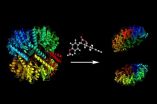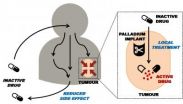Can-do plan gets women trimmer, healthier, and cuts hot flashes
Program shows potential to fit into today's healthcare environment
2014-02-13
(Press-News.org) CLEVELAND, Ohio (Thursday, February 13, 2014)—A woman can beat middle-aged spread, her disease risks, and her hot flashes with the help of her healthcare provider. And even a short term program can spell success for women and fit into a busy provider's practice, shows a demonstration obesity-fighting and health risk reduction program detailed in an article just published online in Menopause, the journal of The North American Menopause Society (NAMS).
Making lifestyle changes can take a lot of work. Programs that have successfully helped women lose weight and reduce their other heart disease risks have been long and intensive—and they work as long as the program goes on. Most first-line women's healthcare providers, such as obstetrician-gynecologists or primary care providers, don't have the time and might not be reimbursed for so many consultations.
But this pilot program, called WAIPointes (WAI stands for "who am I"), took only five visits that all were reimbursed by insurance. And it kept the participants engaged in achieving their health goals by showing them that they could reduce their menopause symptoms, in addition to their long-term disease risks, with healthy lifestyle changes.
The 83 women who completed the 6-month program ranged from 35 to 55 years old, and most were in perimenopause or menopause. At an orientation, the women learned about menopause and the health risks that come with it and were told they have the opportunity to get their personal health risks assessed if they joined the program. At the first visit, they answered questionnaires and got assessments of body weight and fat and menopause status and went home with a pedometer and a health diary, educational materials, and goal-setting worksheets to develop their personal health goals. From the second to the fifth visit, each woman had health assessments including waist measurement, blood pressure, menopause symptoms, mammograms and bone density tests if needed, and blood tests to look for inflammation, high cholesterol, and diabetes.
Once a woman had her goals set, she discussed with the healthcare providers how to reach those goals, what obstacles stood in the way, and how to overcome them. If distressing menopause symptoms were obstacles, the providers offered the women treatment options, such as lifestyle modifications or medications, to overcome them.
"Empowerment through education is a cornerstone of our intervention," wrote the authors. Their surveys of the participants and the health assessments showed that approach was working.
By the end of the program, the women understood their health risks better, and they had already made significant progress toward achieving their health goals. They trimmed their waistlines by an average of an inch and a half and lowered their diastolic blood pressure by 2 points. What's more, their hot flashes and other menopause symptoms, such as energy, libido, mood, and vaginal dryness, had all improved significantly. And each woman had a "life action plan," with personalized recommendations, to continue working toward their health goals.
INFORMATION:
Founded in 1989, The North American Menopause Society (NAMS) is North America's leading nonprofit organization dedicated to promoting the health and quality of life of all women during midlife and beyond through an understanding of menopause and healthy aging. Its multidisciplinary membership of 2,000 leaders in the field—including clinical and basic science experts from medicine, nursing, sociology, psychology, nutrition, anthropology, epidemiology, pharmacy, and education—makes NAMS uniquely qualified to serve as the definitive resource for health professionals and the public for accurate, unbiased information about menopause and healthy aging. To learn more about NAMS, visit http://www.menopause.org.
ELSE PRESS RELEASES FROM THIS DATE:
Immunologists from the University of Bonn topple dogma
2014-02-13
An international team of scientists under the leadership of the University of Bonn disproves a dogma: To date, immunologists have assumed that the macrophages functioning as "scavenger cells" can be classified into two different forms. In an extensive search, the researchers have now discovered that these immune cells turn into far more different manifestations. These findings also give rise to completely new therapeutic approaches for many widespread diseases. The results are now being published in the renowned journal Immunity.
In the body, macrophages go on patrol ...
Books rate more negatively after winning award, study finds
2014-02-13
Looking for a good book? Stay away from the award-winning section of the bookstore or library.
New research from Amanda Sharkey of the University of Chicago Booth School of Business finds that a book read after winning a prestigious award will likely be judged more negatively than if it's read in its pre-award days.
In "The Paradox of Publicity: How Awards Can Negatively Affect the Evaluation of Quality," to be published in the March issue of Administrative Science Quarterly, Sharkey and colleague Balázs Kovács of the University of Lugano analyze thousands of reader ...
Study: Beauty not disease motivates teens to wear sunscreen
2014-02-13
After offering information about UV light and sun-protective behaviors, the two health-ed
videos diverge: one describes the increased skin cancer risk of UV exposure and the other
describes effects on appearance including wrinkles and premature aging. Which of these two
videos do you think caused teenagers to use more sunscreen six weeks after it was shown? A
University of Colorado Cancer Center study shows that while teens who watched both videos
learned and retained the same amount of knowledge about UV light and sun-protective behaviors,
only the teens who ...
Air pollution increases risk for hypertension in pregnant women
2014-02-13
GAINESVILLE, Fla. — Breathing the air outside their homes may be just as toxic to pregnant women — if not more so — as breathing in cigarette smoke, increasing a mom-to-be's risk of developing deadly complications such as preeclampsia, according to findings from a new University of Florida study.
UF researchers compared birth data with Environmental Protection Agency estimates of air pollution, finding that heavy exposure to four air pollutants led to a significantly increased risk for developing a high blood pressure disorder during pregnancy. The research was published ...
Light-induced degradation in amorphous silicon thin film solar cells
2014-02-13
This news release is available in German. Researchers at the Helmholtz Center Berlin (HZB) have taken a leap forward towards a deeper
understanding of an undesired effect in thin film solar cells based on amorphous silicon – one
that has puzzled the scientific community for the last 40 years. The researchers were able to
demonstrate that tiny voids within the silicon network are partly responsible for reducing solar
cell efficiency by some 10 to 15 percent as soon as you start using them. Their work has now
been published in Physical Review Letters (DOI: 10.1103/PhysRevLett.112.066403).
Amorphous ...
Two new weapons in the battle against bacteria
2014-02-13
This news release is available in German.
Proteins are made up of a chain of amino acids and are vital for all cell processes. Proteases are among the most important types of protein. Like "molecular scissors", they cut other proteins at given positions and thereby execute important cell functions. By cutting the amino acid chains to the right length or breaking proteins apart they, for example, activate or deactivate proteins, decompose defective ones or switch signal sequences that serve to transport proteins to their proper position within a cell.
But proteases ...
Metal implants may cut chemotherapy side effects, study suggests
2014-02-13
Cancer patients could one day experience fewer side effects from chemotherapy following a discovery that opens the door for more targeted treatments.
Researchers have identified a possible way of treating tumours that would see doctors place harmless metal implants at the cancer site.
The discovery could make treatment more targeted than existing therapies, avoiding unwanted side effects, such as hair loss, tiredness and nausea. These occur when chemotherapy drugs carried in the blood kill healthy cells as well as cancer cells.
The scientists found that they could ...
Deutsche eMark (DEM) - Could be second cryptocurrency coin after Bitcoin
2014-02-13
Deutsche eMark is an open source peer-to-peer digital Internet currency. Deutsche eMark stands for fast and secure payments to anyone around the world, who has an eMark Wallet. Therefore no banks are required and the fees are low and simple to understand. Today price on Cryptsy Exchange is 0.00012, but experts says, that it could fast reach 0.002 DEM/BTC.
Sleep apnea common among stroke-related brainstem injuries
2014-02-13
People whose brainstems are affected by their stroke have a significantly higher prevalence of sleep apnea than those who have stroke-related injury elsewhere in the brain, according to research presented at the American Stroke Association's International Stroke Conference 2014.
Sleep apnea is marked by interrupted breathing during sleep and can lead to serious health problems including heart disease and stroke.
"This is the largest population-based study to address the issue of the location of the brain injury and its relationship to sleep apnea in post-stroke patients," ...
ADHD drugs not linked to increased stroke risk among children
2014-02-13
Children who take medication to treat attention deficit hyperactivity disorder (ADHD) don't appear to be at increased stroke risk, according to a study presented at the American Stroke Association's International Stroke Conference 2014.
In a study of 2.5 million 2- to 19-year-olds over a 14-year period, researchers compared stimulant medication usage in children diagnosed with ischemic or hemorrhagic stroke to stimulant usage in children without stroke.
Researchers found no association between stroke risk and the use of ADHD stimulant medications at the time of stroke ...
LAST 30 PRESS RELEASES:
Structure of dopamine-releasing neurons relates to the type of circuits they form for smell-processing
Reducing social isolation protects the brain in later life
Keeping the heart healthy increases longevity even after cancer
Young adults commonly mix cannabis with nicotine and tobacco
Comprehensive review illuminates tau protein's dual nature in brain health, disease, and emerging psychiatric connections
Book prepares K-12 leaders for the next public health crisis
Storms in the Southern Ocean mitigates global warming
Seals on the move: Research reveals key data for offshore development and international ecology
Sports injuries sustained during your period might be more severe
World's first successful 2 Tbit/s free-space optical communication using small optical terminals mountable on satellites and HAPS
Can intimate relationships affect your heart? New study says ‘yes’
Scalable and healable gradient textiles for multi‑scenario radiative cooling via bicomponent blow spinning
Research shows informed traders never let a good climate crisis go to waste
Intelligent XGBoost framework enhances asphalt pavement skid resistance assessment
Dual-function biomaterials for postoperative osteosarcoma: Tumor suppression and bone regeneration
New framework reveals where transport emissions concentrate in Singapore
NTP-enhanced lattice oxygen activation in Ce-Co catalysts for low-temperature soot combustion
Synergistic interface engineering in Cu-Zn-Ce catalysts for efficient CO2 hydrogenation to methanol
COVID-19 leaves a lasting mark on the human brain
Scientists use ultrasound to soften and treat cancer tumors without damaging healthy tissue
Community swimming program for Black youth boosts skills, sense of belonging, study finds
Specific depressive symptoms in midlife linked to increased dementia risk
An ‘illuminating’ design sheds light on cholesterol
Who is more likely to get long COVID?
Study showcases resilience and rapid growth of “living rocks”
Naval Research Lab diver earns Office of Naval Research 2025 Sailor of the Year
New Mayo-led study establishes practical definition for rapidly progressive dementia
Fossil fuel industry’s “climate false solutions” reinforce its power and aggravate environmental injustice
Researchers reveal bias in a widely used measure of algorithm performance
Alcohol causes cancer. A study from IOCB Prague confirms damage to DNA and shows how cells defend against it
[Press-News.org] Can-do plan gets women trimmer, healthier, and cuts hot flashesProgram shows potential to fit into today's healthcare environment


